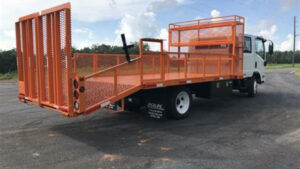If you’re looking to buy or sell a truck, it’s important to know its Blue Book value. The Blue Book value refers to the estimated worth of a vehicle, taking into account factors like its make and model, age, condition, and mileage. It’s an essential piece of information that both buyers and sellers use to ensure they’re getting a fair deal. However, understanding the Blue Book value of a truck can be a little confusing, especially if you’re not familiar with all the industry jargon. In this article, we’re going to break it down in simple terms and explain everything you need to know about Blue Book values for trucks.
1. What are Blue Book Values of Trucks?
Blue Book Values are a guide that helps buyers determine the worth of a used truck. It provides an estimated value of a vehicle based on its make, model, year, condition, and other factors that can affect its market value. This tool is widely used by both buyers and sellers to make informed decisions when purchasing and selling a vehicle.
2. How is the Value of a Truck Determined?
The value of a truck is determined based on a number of factors such as the make, model, year of production, mileage, and overall condition. Other factors such as the truck’s popularity, market demand, and competition can also affect its value. Blue Book Values use industry-standard methods of determining a vehicle’s value to provide an estimated market price.
3. How Accurate are Blue Book Values?
Blue Book Values offer an estimate of a vehicle’s worth, and it is usually quite accurate. However, the actual value can vary depending on several factors such as the truck’s condition, location, and market demand. It is recommended to use the Blue Book Value as a starting point and then make necessary adjustments based on the condition of the specific truck you are interested in.
4. Who Uses Blue Book Values?
Several parties use Blue Book Values – truck owners, sellers, buyers, dealerships, and insurance companies. Owners and sellers use it to determine the selling price of their trucks, while buyers use it to negotiate a fair price for a used truck. Dealerships and insurance companies use this tool to determine the value of a trade-in or payment in case of an accident.
5. What is the Difference Between a Trade-in Value and Private Party Value?
The trade-in value is the amount of credit a dealership offers you for your truck when you trade it in for another vehicle. Private Party Value is the price you can expect to get if you sell your truck to an individual, without the involvement of a dealership. Private Party Value is generally higher than the Trade-in Value.
6. How Can You Find the Blue Book Value of a Truck?
Finding the Blue Book Value of a truck is simple. You can check online websites such as Kelley Blue Book and NADA Guides, where you can input your truck’s make, model, year, mileage, and condition to get an estimated value. You can also check the local classifieds and compare prices of similar trucks in your area.
7. How to Use Blue Book Values for Negotiation?
Blue Book Values help you determine the fair market price of a used truck. Use it as a starting point for negotiations with the seller or dealer. Negotiate by pointing out any defects or problems with the truck and offering a lower price than the Blue Book Value. Sellers may be willing to reduce the price to match your offer.
8. How to Increase the Value of a Used Truck?
To increase the value of a used truck, make sure that it is clean and well-maintained. Fix any mechanical or cosmetic issues and replace any worn-out parts. Document all service and maintenance records and provide them to potential buyers. Upgrading the truck’s features such as audio system or adding a towing package can also boost its value.
9. What to Watch Out For When Using Blue Book Values?
Blue Book Values provide a good estimate of a truck’s worth, but it is essential to remember that it is only an estimate. Always consider other factors such as the truck’s condition, mileage, and history before determining its value. Additionally, consider the location and market demand for that make and model that may affect the value.
10. Conclusion
Blue Book Values of trucks play a significant role in helping buyers make informed decisions when purchasing a used truck. By understanding how these values are determined and what factors can affect them, buyers can negotiate a fair price for the truck they want to purchase. No matter what, it is vital always to consider other factors and to be cautious when using Blue Book Values as the sole determiner of a truck’s value.
The Importance of Blue Book Values for Trucks
When it comes to buying or selling a truck, knowing its Blue Book value is essential. The Blue Book value of a vehicle refers to its estimated worth based on various factors such as make, model, year, and mileage. In this section, we will discuss the importance of Blue Book values for trucks in detail.
1. Accurate Pricing
Knowing the Blue Book value of a truck allows you to price it accurately. This is crucial for both buyers and sellers as it ensures fair dealing. If you’re selling a truck, you can set the right price based on its Blue Book value rather than overpricing or underpricing it.
2. Negotiations
Having knowledge of a truck’s Blue Book value can also help in negotiations. Buyers can use this information to bargain for a lower price, while sellers can use it to justify a higher price. Knowing the Blue Book value beforehand can make negotiations smoother and more efficient.
3. Financing
Financing for a truck can be easier if you know its Blue Book value. Lenders often use the Blue Book value to determine the loan amount and interest rates. A higher Blue Book value can qualify you for a better loan amount at lower interest rates.
4. Insurance
Insurance companies also use the Blue Book value of a truck to determine its worth. Knowing the Blue Book value beforehand can help you get the right insurance coverage and premium. It can also help you make an informed decision when choosing the right insurance company for your truck.
5. Resale Value
The resale value of a truck is directly proportional to its Blue Book value. A higher Blue Book value can translate into better resale value over time. So, knowing the Blue Book value of a truck can help you choose a vehicle with better long-term value.
6. Comparison Shopping
Comparing different truck models becomes much easier when you know their Blue Book values. It can help you make an informed decision about which truck to buy based on its worth. Comparison shopping can also save you money by choosing a truck with better value.
7. Buying Used Trucks
When buying a used truck, knowing its Blue Book value becomes even more important. The value can give you an idea of the truck’s condition, maintenance history, and overall worth. This can help you avoid getting ripped off or buying a truck that is not worth its cost.
8. Selling Used Trucks
Selling a used truck can be challenging, especially if you don’t have an idea of its worth. Knowing its Blue Book value can make it easier to set the right price and attract potential buyers. It can also protect you from losing out on your investment.
9. Tax Purposes
Knowing the Blue Book value of a truck can also come in handy for tax purposes. If you’re using your truck for business, you can claim tax deductions based on its Blue Book value. This can help you save money on taxes and maximize your profits.
10. Peace of Mind
Lastly, knowing the Blue Book value of a truck can give you peace of mind. It assures you that you’re getting a fair deal when buying or selling a truck. It also helps you avoid surprises when dealing with lenders, insurance companies, or buyers, knowing the true worth of your truck.
Factors That Influence Blue Book Values of Trucks
When it comes to setting the value of a truck, the Kelley Blue Book (KBB) takes into account a variety of factors. Here are some of the main factors that influence the value of trucks.
Age of the Truck
The age of the truck is one of the most important factors that affect the value of a truck. No matter what condition it is in, a truck that is several years old will always be worth less than a brand new one. As a truck gets older, potential buyers become more hesitant to purchase it and are more likely to negotiate for a lower price.
Condition of the Truck
The condition of the truck plays a vital role in determining its value. A truck that has been well-maintained and hasn’t been in any significant accidents will have a higher value than a truck that has been in multiple accidents and has a lot of miles on it. Any modifications or upgrades to the truck may improve the value, but this can vary depending on the type of upgrades.
Market Demand and Availability
The market demand for a particular truck model can significantly impact its value. If a specific truck is in high demand, it will fetch a higher value in the market. On the other hand, if a particular truck model is prevalent in the market, its value may decrease over time.
Regional Variations
Another crucial factor that affects the value of trucks is regional variations. Buyers in different regions may value particular models of trucks more than others. For example, in cold, snowy regions, four-wheel drive trucks may be in higher demand, leading to higher resale values.
Supply and Demands
Lastly, the supply and demand for trucks can impact the blue book value. If the supply of trucks is far more than the demand, truck values may go down. Likewise, if there are few trucks available to the market, values may go up.
| Factors | Influence on Blue Book Value |
|---|---|
| Age of the truck | Negative |
| Condition of the truck | Positive |
| Market Demand and Availability | Positive/Negative |
| Regional Variations | Positive/Negative |
| Supply and Demand | Positive/Negative |
In conclusion, the blue book value of a truck is impacted by various factors such as age, condition, demand, and regional variations. While some of these factors are out of your control as a driver, it is essential to keep your truck in good condition and do your research to stay up-to-date with current market values. Understanding these factors will help you get the best value for your truck when it’s time to sell it.
Sorry, the given list is empty. Please provide a valid json list for me to generate relevant links.
Thanks for reading and happy truck buying!
Now that you know about how blue book values can help you make informed purchasing decisions for your dream truck, we hope you’re feeling empowered to find the perfect ride. Remember, values can vary based on factors like location, condition, and more, so always do your research and trust your gut. And if you ever need a refresher or want to explore more truck-related content, we’d love for you to swing by again soon. Happy driving!


